#artistspotlight
Text

RE:BORN 2022
#gif#loop#anime#scifi#retrofuture#lofi#glitch#error#3d#c4d#arnold#mograph#endless#artists on tumblr#artistspotlight
3K notes
·
View notes
Photo

The Silent Whispers by Misna Chanu 🎨 #artistspotlight #whispersofoursouls #whisperoftheheart #soundofsilence (at Catalina Foothills, Arizona) https://www.instagram.com/p/Cnup-AUPLTfGo80Bd9PS252qVBgL8L-ASSiQmg0/?igshid=NGJjMDIxMWI=
21 notes
·
View notes
Photo
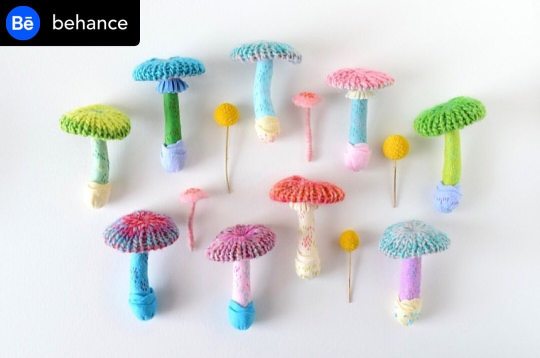
Behanceポートフォリオのインスタで「編みキノコブローチ」をシェアして頂きました! My knitted mushroom brooches were featured on @behance portfolio Instagram! #水島ひね #hinemizushima Posted @behance Moodboard inspired the fantastical and mystical world of fungi 🍄 Featuring work by @daninjafx, @hellosongbom, @songhkang, @bandaminta, @marielamezquita, @sheishine, @marijatiurina, @ionelaapetrii, @dashaplesen, and more. Full moodboard in our bio link. . . . #behance #artistspotlight #moodboard #fungi #mushroom #3d #3dart #motiondesign #3ddesign #animation #illustration https://www.instagram.com/p/CpjpZXauDej/?igshid=NGJjMDIxMWI=
#水島ひね#hinemizushima#behance#artistspotlight#moodboard#fungi#mushroom#3d#3dart#motiondesign#3ddesign#animation#illustration
7 notes
·
View notes
Text
Artist Spotlight: John Gnorski

When we asked John Gnorski what on earth are EARTH BABIES, he took us on a subterranean journey to meet them. Or at least that's how it felt. Hearing John speak about his creative process certainly takes you all over, even into your subconsciousness, about which he has a lot to say. His art is full of strange landscapes, strange portraits, strange figures. Our current fave is one from his Clouds Roll By Like A Train In The Sky series not because of its great title, or because the clouds might actually be birds or blossoms, but because peeking through the print's ink is the grain of the woodblock, reminding us of the materiality that grounds all our work, no matter how wildly dreamt.
Studio AHEAD: John, your bio is mysteriously pithy: “Born in Alexandria, Virginia, living/ working in Point Reyes Station, CA.” What brought you to the other side of the country?
John Gnorski: I moved from the East Coast more or less on a whim in 2007, picking up and leaving the Hudson Valley, which had been my home for 6 years at that point, and ending up in Portland, OR. Luckily it was still a pretty affordable town at the time so I was able to piece together a nice existence doing carpentry for a day job (which would indelibly inform my art practice) and making art and music every other waking hour. I found a great community, fell in love with the truly epic landscape of the West, and at some point the West Coast just became home.
After many happy years up in Oregon, my partner Katie, who is a filmmaker, decided to get a master’s degree and that instigated our (truly auspicious) move to the Bay. One thing led to another, and we were lucky enough to find a house to rent in Pt. Reyes Station. Before long we found a great community out here and we hope to stay for as long as we can.
I do miss the East sometimes, especially the sort of archetypal procession of seasons there with crisp autumn days, deep winters, and summer thunderstorms and lighting bugs. That said, I can’t imagine a more beautiful place to live than here on the Northern California coast. I’m grateful every day to be here and I often think to myself how did I even end up here in this incredible place?
Studio AHEAD: Has Northern California come to influence the materiality of your work?
John Gnorski: Absolutely. In a very literal sense I tend to use native wood in my work whenever I can, but the influence goes beyond the physical material to a particular sensibility that seems to be shared by a lot of Northern California artists across generations and styles. I find that, at least in my experience, there’s less concern out here about the whole (false) binary of art vs. craft than I experienced as a young artist on the East Coast (particularly in the vicinity of New York).
I think that this attitude has, thankfully, changed quite a bit pretty much everywhere in the years since I moved west, but nevertheless California has a long history of breaking down established conventions and categories. Ceramics and wood sculpture, for instance, have been taken seriously out here for generations in a way that hasn’t historically been the case out east.
This anti-hierarchical spirit famously permeates a lot of the culture out here. A nice example is the great DIY building tradition of the “hippies” and other folks who took to the rural areas of the coast, starting in the middle of the last century, and made truly beautiful, strange, and inspired homes out here that flout both architectural convention and often the laws of physics. I’ve had the pleasure of helping to restore some buildings like this up in Mendocino and, to bring this full circle, some of the little scraps and bits I’ve taken with me from those projects have become pieces of my own work, along with the lessons of those often anonymous artist/builders who made, intentionally or not, amazing sculpture-houses.
There’s also a very strong Japanese influence on the aesthetics of so much California art/craft/design that’s found its way into my work. Would I be making these very Japanese/Noguchi-inspired lanterns if I hadn’t ended up here? I don’t know for sure but I’m guessing this place has informed them quite a bit.
Studio AHEAD: Don't get Homan started on Noguchi. He's obsessed. What is your relation to abstraction? Many of your sculptures and drawings almost seem to form recognizable figures, but not quite.
John Gnorski: With very few exceptions everything I make is representational even if it’s hard to decipher the image in the finished piece. I’m looking at a little watercolor painting right now that would almost certainly appear totally abstract to anyone but me, but I know that I made it in the Mojave desert and I can see the particular landscape that I was trying to depict—the horizon, the heat ripples, little constellations of scrubby desert plants—though it’s basically reduced to visual symbols.
It’s not necessarily a formal decision I’ve made to avoid pure abstraction, it’s more of a narrative one. Having concrete subject matter is an important starting point for me, one method of avoiding the potentially paralyzing experience of confronting the blank page. So even if the finished picture or object ends up miles away from where it began, I still start by saying to myself, for instance: I’m going to draw a lizard sunning itself on a stump or, as in one of the pictures I’m working on now, I’m going to draw a bather in Tomales Bay stooping down to look at a bat ray. One might end up a pretty faithful manifestation of the concept while another might go through the ringer of some process and turn out as a loopy line drawing that barely hints at its source material.
I sometimes do the same thing when I write songs, coming up with a title first and then writing into that. The two even intersect as in my continuing series of cloud pictures all of which are titled “Clouds Roll By Like A Train In The Sky” which is also the name of a song I wrote. Without the title those pictures read as geometric abstraction, but with the title they become clouds. Context is so important!
Studio AHEAD: Those cloud pictures, and also your Rorschach-like quarantine notebooks/bird and butterfly prints, give room to the subconscious. How do you get into that mental space when creating that allows for the subconscious to take over?
John Gnorski: Allowing room for the subconscious is really important to me because at the end of the day it’s very often the accidental/unintentional things that really resonate with me. To clarify, when I say subconscious in this context what I’m really talking about is allowing forces outside of my control to work in the picture/object. I try to maintain a decent level of competence when it comes to the basics of art-making, but I also try to use whatever “technique” I’ve developed to allow chance and accident to do their wonderful work. I know that nothing I could map out perfectly from start to finish will be nearly as interesting as something that transforms in ways I never could have anticipated through the process of the making.
This sensibility is very visibly present in the Rorschach-style pieces and a lot of my sketchbooks and works on paper, but it’s there in less obvious ways in all of my work. The lanterns, for instance, might appear as though each little bit of joinery was carefully plotted out, but in reality they are built based on pretty simple line drawings and constructed in an organic manner. I’ll have a basic shape I want to achieve, but the way everything is put together is done on the fly. Sometimes a connection might become redundant structurally as a piece grows, but I’ll keep it in there as a remnant of the process. All the little false steps and unintentional gestures become a part of the piece and give it a complexity I wouldn’t have achieved if I’d set out with a dialed-in plan and done things in the most elegant and minimal way possible.
The same is true of the ink on paper pieces which begin life as charcoal drawings and allow chance to seep in throughout the process. I rub the drawings onto plywood “plates” which transfers them in an imperfect but legible manner. I’m also using multiple plates and pieces of paper to allow for misalignments, and the plates themselves are of a type of plywood that tends to have an active grain that sometimes splinters or “runs”—interrupting the carved line in often surprising ways. I hand print the plates, which produces unexpected textures, and then go back into the image with more ink or sometimes collage or pastel. So in the end what began as a pretty clear and maybe even graceful line drawing becomes, through the welcoming-in of chance, something a bit more nuanced and awkward, full of special little moments on its physical surface that come out of that totally not conscious place of process.
Studio AHEAD: Tell us about EARTH BABIES, your collaboration with Kate Bernstein. We are particularly interested in how collaboration impacts the creative process—we have many ideas about this at Studio AHEAD and those ideas are constantly evolving. Do you find it easier to work alone or with a partner?
John Gnorski: EARTH BABIES is the conceptual tent that shelters all the collaborative work that Katie and I do together. It started as a music/installation performance at an amazing event called Spaceness that friends of ours organized for 5 years on the coast of Washington at a place called the Sou’wester.
Spaceness was a very free-form community art-making event that revolved around the concept of the unknown, and often featured work relating to outer space or unexplored worlds. It was held annually in early spring—the very darkest and dreariest time of the year in the Pacific Northwest—and it featured music, dance, video, radio, you name it. Folks would work for months on their contributions, and it was so beautiful: community coming together to make their own entertainment and help each other through dark days. For me, this is the best case scenario for art-making. I like to think of it as subsistence art—art for fun and joy and also for survival. It honestly makes me tear up thinking about it, and I often cried during the performances there. It just moves me so much to see what people can make with little to no budget out of the simplest materials like cardboard, scrap wood, clip lights, fabric, words: whole worlds that can really put you under a spell, transport you, communicate a message, and make time and space for our imaginations to nourish one another.
Anyway (and forgive me, this is going to get maybe a little esoteric) Katie and I, inspired by a trip to Ghost Ranch in New Mexico, came up with this idea of a whole culture of beings living deep under the surface of our Earth called “Earth Babies.” We first wrote and recorded songs based on this imaginary world, and over the years we made various installations: the “Healing Machine” which was a sound bath in a hand-built A-frame in the woods and the “Hopler Archive,” a fictional natural history museum.
At this point, EARTH BABIES is the name we use whenever we want to make something creative without the burden of our “actual” identities getting in the way. It’s our shared alter ego that allows for maximum creative expression.
As for collaboration generally, as much as I love spending time alone in my studio, my ideal art making ratio would be 25% solitary practice, and 75% collaboration. I love the energy of working with other artists, performers, thinkers, etc., and I think that collaboration leads to amazing things no one ever could have come up with on their own. I also think that community events like DIY music shows, theater, potlucks and ephemeral art exhibits in informal spaces are the most heartfelt and wonderful forms of art —purely collaborative and collectively authored. Again, it’s that idea of “subsistence art”. If none of us had to worry about selling our work I think there would naturally be a lot less emphasis on individual style and a lot less concern about authorship. Maybe collaboration would be the new norm and we could all contribute a verse to the big song we sing to sustain ourselves.
Studio AHEAD: What's your favorite music to listen to while making art? You are also a DJ and musician.
John Gnorski: Katie and I host a radio show on West Marin’s community radio station KWMR every other Sunday morning, which has really made us feel connected to the community out here.
I listen to a huge variety of music in my studio from atmospheric/ambient music like Brian Eno and Hiroshi Yoshimura to soul to Neil Young to Terry Riley to Alice Coltrane to Lucinda Williams. I’ll often just rely on my cassette library to take a break from the digital realm, which features a lot of mixtapes from Mississippi Records, my favorite record store/label. But if I had to choose only one thing to listen to while making art it would be Ornette Coleman. I’ve listened to a collection of his recordings called Beauty Is A Rare Thing many thousands of times over the years in every studio, basement, garage, and shed I’ve worked in. His music has every color and emotion and gesture in it, and it radiates compassion and energy and love. It’s also difficult at times and can go from soothing to jarring pretty quickly, much like life. When I listen to a song like “I Heard It Over The Radio” I hear everything from voices harmonizing singing a folk song to animals making raucous calls to wind in the trees and rattling subway cars.
Studio AHEAD: What can you do in music that you can’t do in the plastic arts? And vice versa?
John Gnorski: For me the boundaries are pretty porous. As I alluded to earlier with the titling of my work, there’s a lot of crossover and dialogue between disciplines in my practice. It’s easier for me to come up with analogies. A skittering, hesitant line in a drawing conveys something similar to a thin, airy flute or a tentative phrase on a piano. Take a lyric like this one by Leonard Cohen:
Nancy was alone
looking at the late, late show
through a semi-precious stone.
It conjures all kinds of atmospheres and emotional states like a Rothko or an Alice Neel portrait. Whenever I hear Alice Coltrane play the harp I think of someone painting with absolutely every color on their palette.
Music, however—live music—does have the wonderful quality of being ephemeral that most plastic arts don’t possess. It allows you to really inhabit the moment if you choose to. As a performer you’re also able to collaborate with an audience in a way that’s much harder to do with visual art. If you can engage an audience, or are part of an engaged audience, it can really make the experience special, with everyone kind of rooting for the performers and contributing their attention and energy to make the whole experience really lovely.
Then I suppose there are some stories that can be more eloquently told in pictures or gestures than in sound. Light can be captured really evocatively in a drawing or a painting and used to make form in the realm of sculpture. There are some feelings you can only get, some ideas that can only be conveyed, when you’re in the presence of a physical thing.
Studio AHEAD: I want to end on the very first photo posted on your Instagram. It’s a poster that says: “Now is the time to do your life’s work.” How do you or how do you try to live this mantra?
John Gnorski: I made this picture as a kind of personal affirmation to hang on my studio wall many years ago. A lot of people who came through commented on it and it seemed like most everyone appreciated the reminder.
My idea of my “life’s work” changes all the time, but the constant is a commitment to making things that I hope will tell a story or convey a feeling clearly and with heart. At times it can seem like art is some kind of luxury or commodity, but then I remember how it has truly illuminated and influenced and given hope and shape to my life and the lives of a lot of other people over the entire course of human existence. I think that being an artist is as noble a vocation as any, and more helpful to humanity than a lot of things I could be doing with my time.
I’m in the fortunate position of being able to primarily make a living by making art and other art-adjacent objects these days, but in the recent past when I would be laboring away at a carpentry gig, I would think of that image and that mantra and remember that I had some kind of calling beyond the job that paid the bills—a “life’s work” that couldn’t be defined by an hourly rate—and that the artist work deserved and demanded my commitment. I still believe that if I show up for the muse or universe or whatever you want to call it everyday, ready and willing to work, that I’ll be able to somehow keep doing this as my life’s work and hopefully make things that help other people see life or hear it or survive and take joy in it.
Studio AHEAD: We love that. We always start with asking our clients how they live. It's so important. Can you give us three creative people/places/cultural forces based in Northern California that we should take note of?
John Gnorski: Cole Pulice is a musician/composer living in the East Bay whose music often keeps me company in the studio. We also listen to a piece of theirs almost every day on the short drive from our house to the trail that we walk to check on the animal neighbors and greet the day.
Bolinas/Pt.Reyes/Inverness DIY art/music scene This is an acknowledgement of the type of creative community vitality that to me is the heart of sustaining art-making—artists, musicians, writers—we can also get specific and talk about it in terms of two spaces where most of this stuff takes place: the Gospel Flat Farm Stand and the hardware store in Bolinas. Both are DIY spaces of the highest caliber that provide the setting and the energy for art to happen.
Ido Yoshimoto. I know that everyone reading this probably already knows Ido’s work [if not, we interviewed him here —SA] but I feel compelled to shout him out because he so generously invited me into the community here when we landed a few years back. He’s also shared knowledge and food and time. The people who make their lives here and share their talents and have profound respect for the land are the soul of this place, and Ido is one of those people.
Photos by Ekaterina Izmestieva
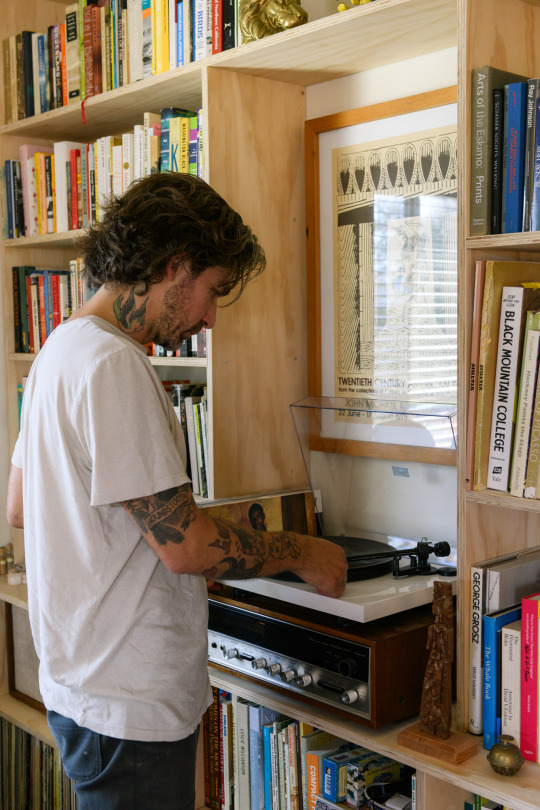
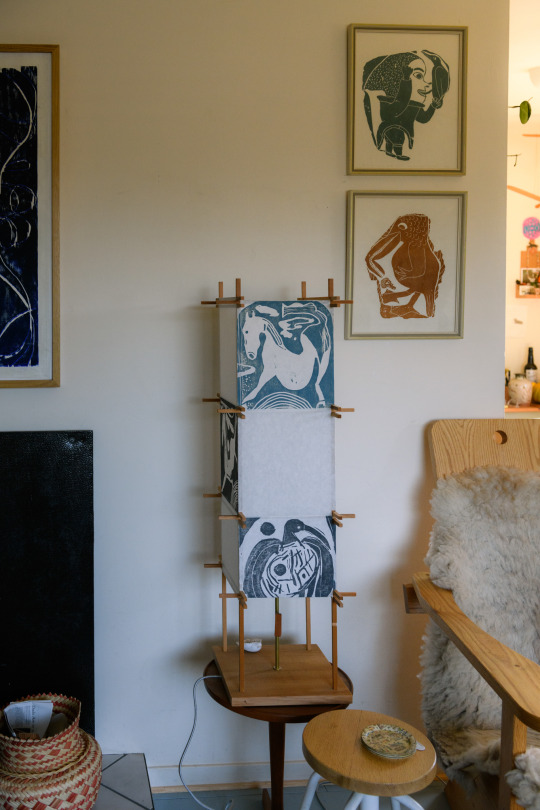
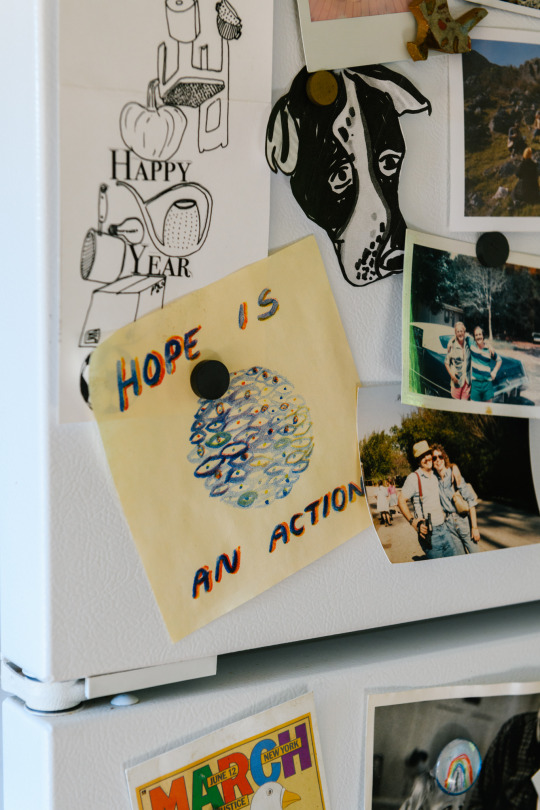
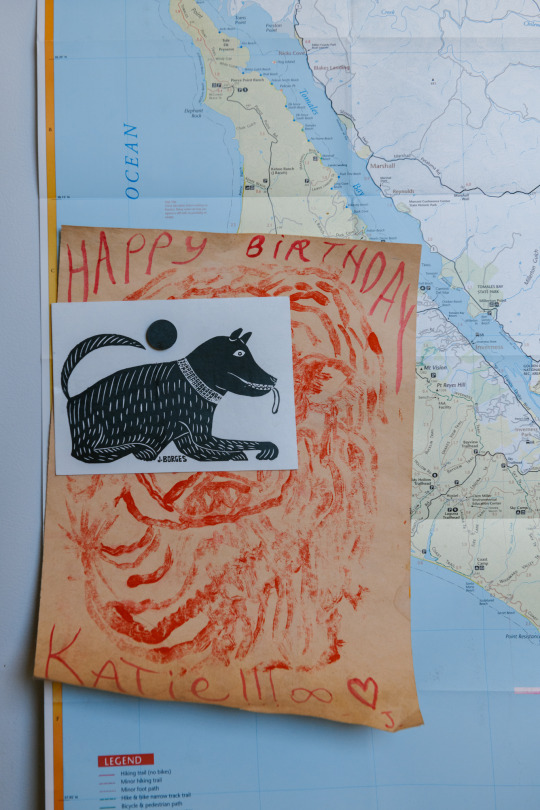
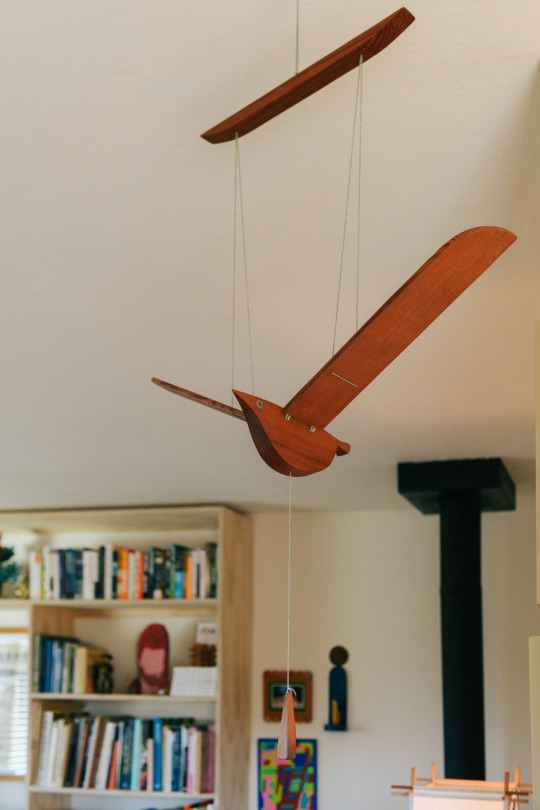

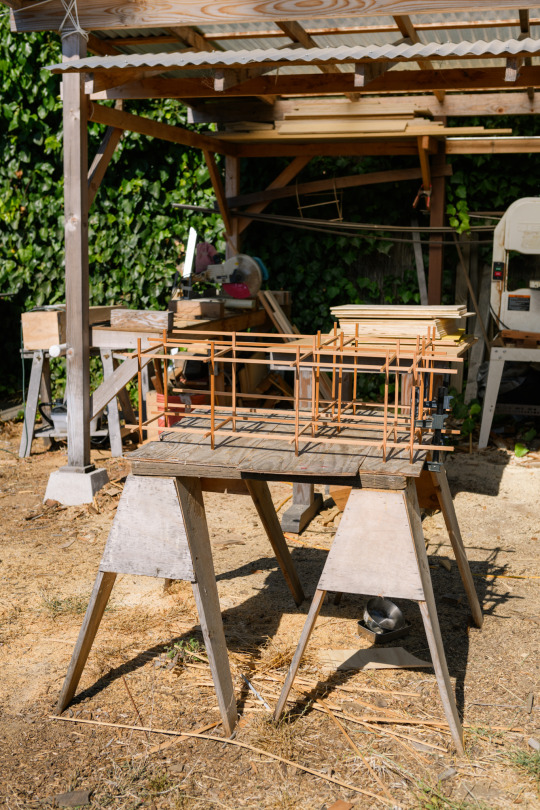


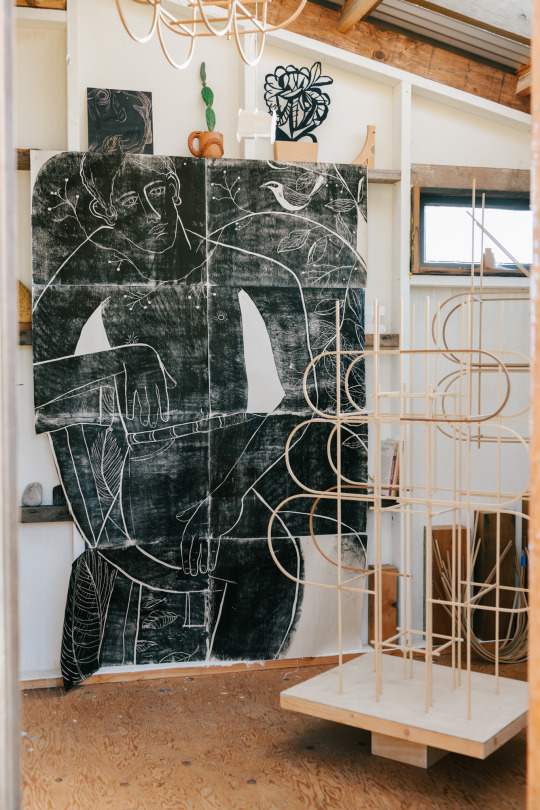
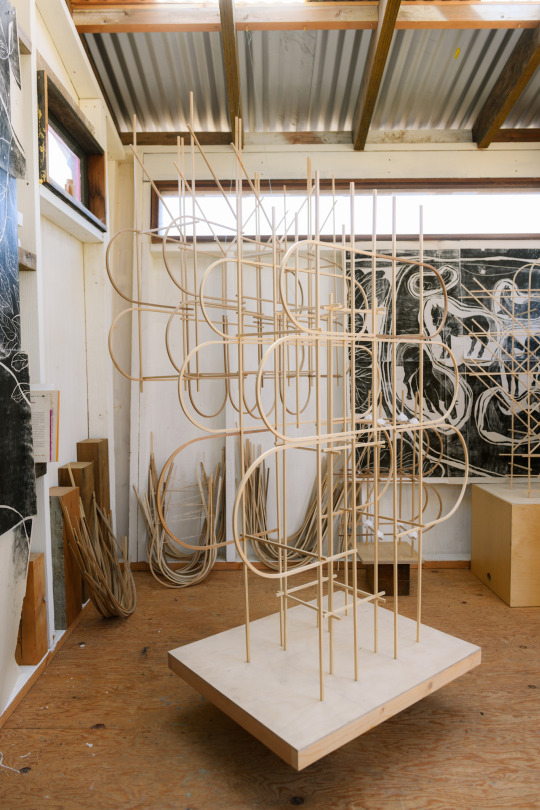
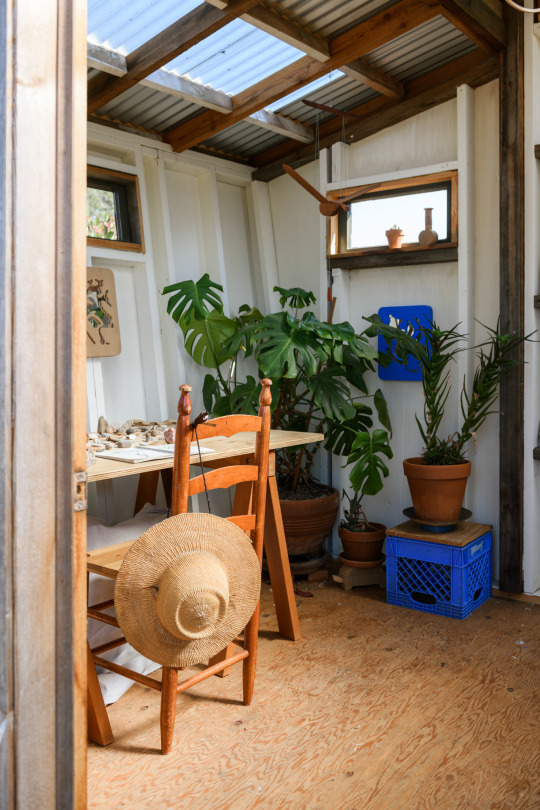

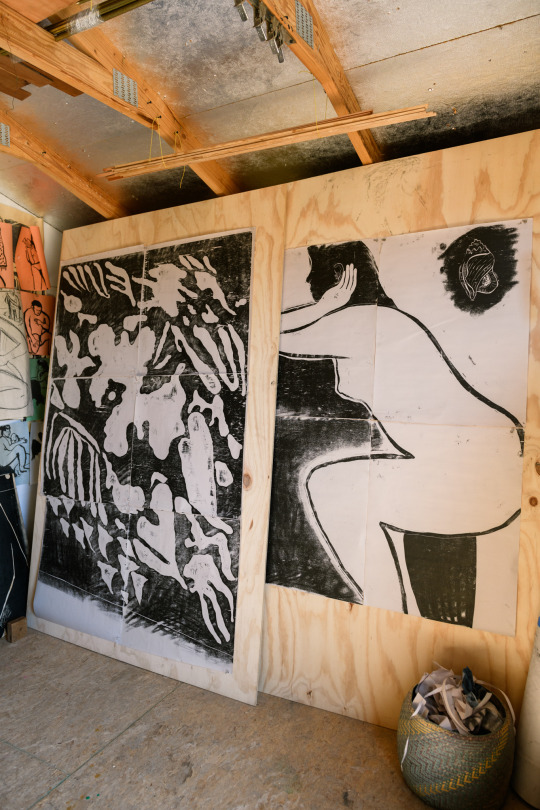
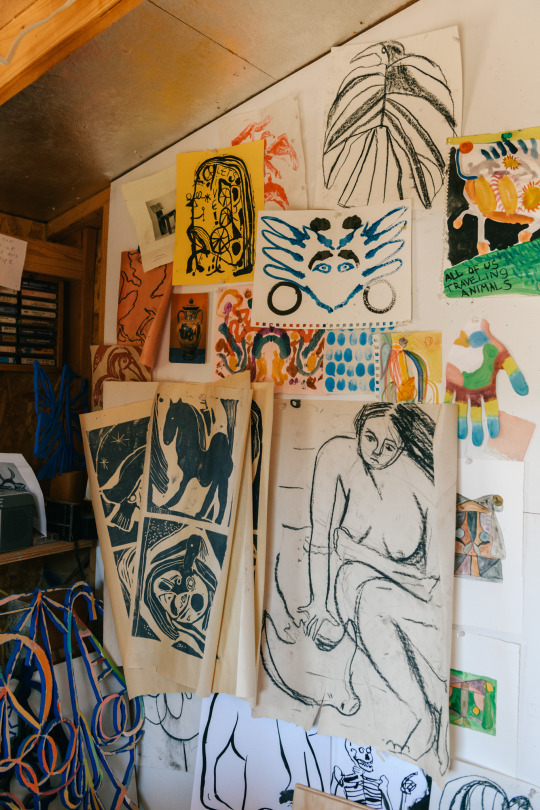

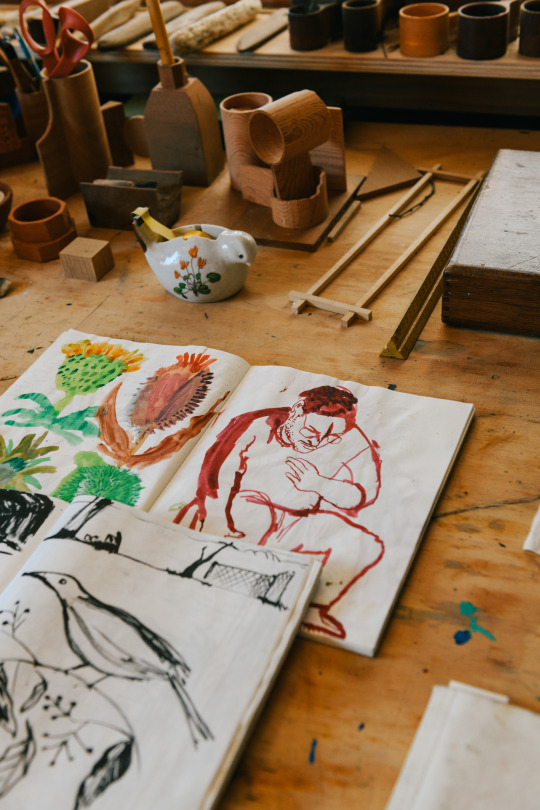
2 notes
·
View notes
Photo

Here’s a repost of my freehand graphite @mskristinlkreuk drawing ☺️ #kristinkreuk #burdenoftruth #smallville #chuck #joannahanley #lanalang #glamour #model #draw #drawing #freehand #art #staedtler #instaart #artcollective #graphite #artistsoninstagram #pretty #pencil #artistspotlight #portrait #gallery #pencildrawing #sketch #wcw #realism #fanart #photorealistic #photorealism #jjdart https://www.instagram.com/p/Cmuhh0EPPEN/?igshid=NGJjMDIxMWI=
#kristinkreuk#burdenoftruth#smallville#chuck#joannahanley#lanalang#glamour#model#draw#drawing#freehand#art#staedtler#instaart#artcollective#graphite#artistsoninstagram#pretty#pencil#artistspotlight#portrait#gallery#pencildrawing#sketch#wcw#realism#fanart#photorealistic#photorealism#jjdart
7 notes
·
View notes
Text
Artist Spotlight: #SaintHarison
Brilliant voice and artist, and literally every cover I’ve heard from him he dominated on it. Hopefully one day he gives the supporters a full project of such. But also outside of the he recently released a single which is also doing great on pop charts, anyways great talent and artist that you should look into. Nonetheless love this mans voice and I'm sure you all will too.
(They only allowed me to post one so this the introduction to him)
Artist ig: https://instagram.com/saintharison?igshid=YmMyMTA2M2Y=
#TPMDaily #TPMForeva #saintharison #adele #cover #Frankocean #Taylorswift #Yebba #TPMjustthemessenger #PokeythakiddFacts
#thakiddzpokey#tpmdaily#tpmforeva#tpmjustthemessenger#saint Harrison#saintharison#artistspotlight#Adele#cover#pokeythakiddfacts
2 notes
·
View notes
Text

⚠️ Game Over Bucket hat!!!⚠️
Super cute color blocked bucket hat with blue reflective brim and Holographic panels!
Embroidered Game Over & YokaiSekai Logo on the front and a rubber YokaiSekai logo patch on the back!
Will be available @fanimecon dealers hall 1103
Coming soon online at YOKAISEKAI.COM
#jfashion#streetwear#kawaii#fashion#cute#kawaiifashion#aesthetic#ArtistSpotlight#illustrator#smallbusiness#artistofinstagrm#apparelbrand
6 notes
·
View notes
Photo

If you signed up for me monthly letters, you know I’ve been living with pain for the past 2 years. I’ve gotten used to it. But sometimes it feels like my arm is just quitting on me. . . PS: I have few tendon issues, the real problem is nerves. . . #comicstrip #artistspotlight #artistproblems #artistslife #daniellepioli #tirinha #quadrinho #webcomics https://www.instagram.com/p/Cg2fT3NgvhW/?igshid=NGJjMDIxMWI=
5 notes
·
View notes
Photo

✨💀 Wip. Hello! I’ve been a little bit out of social media, but I’m back! 😌. This is a detail of an upcoming project, soon more details. #artwork #instaart #artistoninstagram #artistspotlight #artist #spotlightonartist #academic_art #originalart #artwork #finearts #fineart #hifructose #beautifulbizarre #creepmachine #archenemyarts #lowbrowart #penahitam_arts #brutsubmission #wowwow #newcontemporary #newpsychodelia #psychodelicart #popsurrealism #lowbrow #neopsychodelia #darksurrealism (en Mexico City, Mexico) https://www.instagram.com/p/CfHYGn6OaeQ/?igshid=NGJjMDIxMWI=
#artwork#instaart#artistoninstagram#artistspotlight#artist#spotlightonartist#academic_art#originalart#finearts#fineart#hifructose#beautifulbizarre#creepmachine#archenemyarts#lowbrowart#penahitam_arts#brutsubmission#wowwow#newcontemporary#newpsychodelia#psychodelicart#popsurrealism#lowbrow#neopsychodelia#darksurrealism
4 notes
·
View notes
Photo

2022 Ritornare al punto di partenza. Ripartire dal punto di ritorno. • • • #illustrators #illo #illustratorsoninstagram #artistsoninstagram #illustration #artist #room #working #workspace #gallery #draw #drawing #artistrooms #room #wfh #freelancer #artroom #timeless #instaartist #artistsupport #artistspotlight #instaart #instapic #bologna #borgo99bologna #silviasperdutaillustration #sperduteillustrazioni (at Bologna, Italy) https://www.instagram.com/p/CeKTJS3qTgS/?igshid=NGJjMDIxMWI=
#illustrators#illo#illustratorsoninstagram#artistsoninstagram#illustration#artist#room#working#workspace#gallery#draw#drawing#artistrooms#wfh#freelancer#artroom#timeless#instaartist#artistsupport#artistspotlight#instaart#instapic#bologna#borgo99bologna#silviasperdutaillustration#sperduteillustrazioni
2 notes
·
View notes
Text
Celebrating Independent Artists: The Soul of Creativity | Happy Independent Artists Day 2024
Celebrating Independent Artists: The Soul of Creativity
Introduction: Every year on April 3rd, Independent Artists Day is celebrated to honor the incredible contributions of independentartists to the world of art and culture. These artists, often operating outside the confines of mainstream institutions, embody the true spirit of creativity, innovation, and self-expression.From painters and musicians to writers and filmmakers, independent artists enrich our lives with their unique perspectives andimaginative works. On this special day, let us take a moment to recognize and celebrate the remarkable talents of these individuals who dare to pursue their artistic visions against all odds.
The Power of Independence: Independence lies at the heart of artistic expression. For independent artists, the freedom to create without constraints or commercial pressures is essential. They have the autonomy to explore unconventional ideas, challenge societal norms, and experiment with different mediums. Whether they choose to work from their home studios, perform in underground venues, or self-publish their writings, independent artists embrace their autonomy as a source of strength and inspiration. Their independence allows them to stay true to their artistic vision, unfettered by external influences or expectations.
Diverse Forms ofCreativity: Independent artists encompass a wide spectrum of creative endeavors, spanning across various artistic disciplines. Visual artists use their canvases to capture emotions, provoke thoughts, and evoke visceral reactions from their audiences. Musicians craft melodies that resonate with our souls, infusing their songs with passion, rhythm, and meaning. Writers weave intricate narratives that transport us to distant lands, challenge our perspectives, and ignite our imaginations. Filmmakers tell compelling stories that entertain, educate, and inspire, pushing the boundaries of cinematic artistry. In every form and medium, independent artists infuse their creations with authenticity, originality, and raw emotion.
Challenges and Triumphs: Despite their undeniable talent and passion, independent artists often face numerous challenges on their artistic journey. Financial insecurity, lack of recognition, and limited resources are just some of the obstacles they encounter along the way. Yet, it is precisely these challenges that fuel their determination and resilience. Through sheer grit and determination, independent artists overcome adversity, carving out their own paths to success. They harness the power of community, collaborate with like-minded individuals, and leverage digital platforms to amplify their voices and reach wider audiences. With each triumph, they reaffirm the importance of artistic freedom and the enduring value of creativity in our society.
Celebrating Independent Artists: On Independent Artists Day, let us celebrate the vibrant tapestry of talent and creativity that independent artists bring to our world. Take a moment to discover new artists, explore their work, and support their endeavors. Attend a local art exhibition, buy directly from independent creators, or simply share their work with others. Your support and appreciation can make a world of difference in the lives of independent artists, empowering them to continue pursuing their passions and enriching our cultural landscape. Together, let us honor the indomitable spirit of independent artists and reaffirm our commitment to fostering a world where creativity knows no bounds.
Conclusion: As we celebrate Independent Artists Day, let us recognize the profound impact that independent artists have on our lives and our society. Their courage, creativity, and resilience inspire us to embrace our own unique talents and pursue our passions with unwavering dedication. Whether they are painting masterpieces, composing symphonies, or writing novels, independent artists remind us of the boundless possibilities of human imagination. Today and every day, let us stand in solidarity with independent artists and champion the transformative power of art in all its forms.

#boardingschool#ambala#springfieldpublicschool#admissionopennow#cbseschool#cbse#education#hostellife#education2024#schoollife#artist#IndependentArtistDay#independentartist#ArtistSpotlight#artistperformance#no1artist#schoolnearme#school#SainikSchoolCoaching#admissionopen2024_2025#admissionopen2024#art#BoardingSchoolLife#hostel#NDA#Rims#ielts#SPS#SpringfieldPublicSchool#haryana
1 note
·
View note
Text
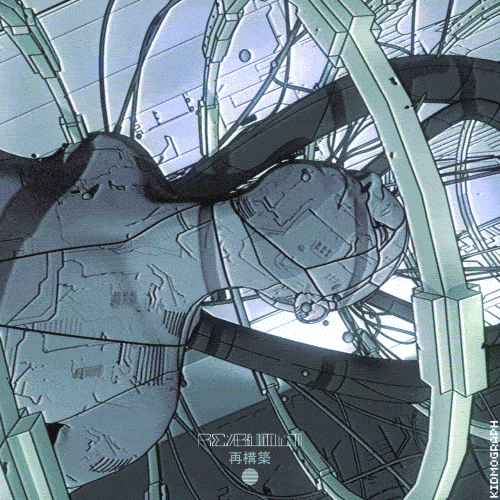
RE:BUILT
#animation#gif#loop#video#c4d#sketch#cyberpunk#cybercore#retrofuture#science fiction#scifi#3d#artists on tumblr#artistspotlight
2K notes
·
View notes
Photo
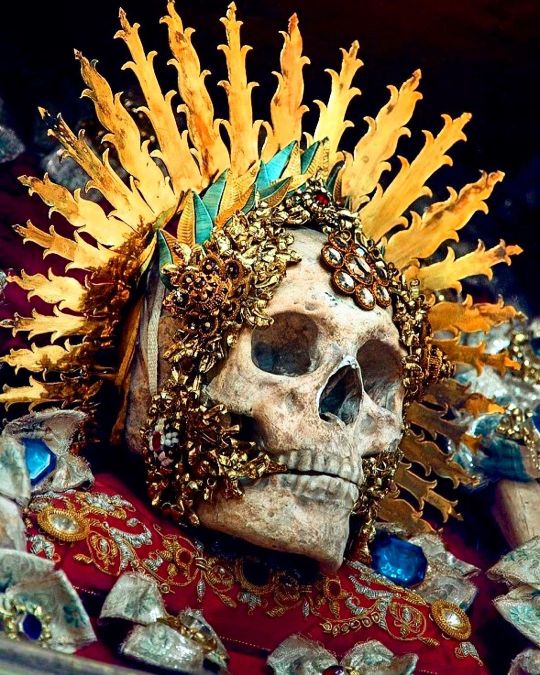
Heavenly Bodies: Cult Treasures & Spectacular Saints from the Catacombs by Paul Koudounaris #artwork #artistspotlight #culttreasures #heavenlybodies #saints #spectacularart (at Catalina Foothills, Arizona) https://www.instagram.com/p/CmzDV_1riAY3Hc6lYwnFLFISw_oG5sogk4-3cA0/?igshid=NGJjMDIxMWI=
9 notes
·
View notes
Text

"This is Porter" – Teaser zum Artist Spotlight auf Bad Wolf Radio.
Sendezeit: Samstag, 10. Februar • 1:00 MEZ (19 Uhr EST)
Link zur Teaserseite:
Seite: https://www.badwolfrecords.net/en/porter
#porter#metal#alternativerock#band#genosha#rock#music#art#love#radiospecial#radio#feature#radiofeature#badwolfradio#artistspotlight
0 notes
Text
Artist Spotlight : Nobuto Suga

It will surprise no one that Studio AHEAD loves walking through the deep forests of Marin. So it was a delight to speak this month with Nobuto Suga, a Japanese-born woodworker who shares with us not only an appreciation for Northern California's forests, but a willingness to allow the natural world to influence and guide his creative work. To look at a Suga piece is to read, behind each block of wood, the tree that gave the piece its form and the landscape that gave home to the tree: "We are not separate from our natural world. Nor are we separate from each other." We were happy to speak of creative partnerships with those we cherish: in our case, Elena and Homan; with Suga and his partner Amy.
Studio AHEAD: Share with us some of your journey in arriving to California. Did you grow up here? What was your introduction to woodworking?
Nobuto Suga: I grew up in the countryside of Hiroshima, surrounded by forest and farmland. I started playing around with wood when I was sixteen. I remember one day my father brought some pieces of milled lumber home. The pieces came from trees that had been cut down on one of his landscaping sites. I was fascinated by the grain patterns in the wood and I wondered what form I could shape from the wood. I made a towel rack and some shelves, those were my first woodworking projects. They are still in my family home, and whenever I visit there, I see the living element of memory in those early pieces.
In 2000, I went to upstate New York to study ecology and gain a wider understanding of ecosystems. On a visit to the West Coast my eyes were opened by the majestic landscape of an old-growth forest. When I settled in San Francisco in 2014, I reconnected with the forests and woodworking. I have been deepening my appreciation ever since.
SA: Does the region where the tree grows affect how you work with it? Does a tree in Japan necessitate a different way of keeping its integrity than does a tree in California?
NS: Yes, absolutely. It does affect how I work. I had an opportunity to work on the edge of the coast recently under an old cypress canopy. I felt a direct connection with the surrounding elements—the wind and the rocky landscape. Connectivity to place is a very important part of my process when forming and laying out a vision and a direction. Without that connection, I can not make work. Relationship to place is extremely meaningful for me.
The most majestic tree I have ever encountered is at a Shinto shrine in Hiroshima. It’s wildly branching. The tree is covered with moss and lichen. It hosts so much life. It is a living historical artifact. Typically the trees around shrines are given the most respect in Japan. But a tree is a tree and deserves deep respect no matter where it grows.
SA: Tell us more about this respect. How does a designer go about respecting the material? Does this play into or get in the way of innovation, of using materials new ways?
NS: I’m keen on using urban salvaged and reclaimed wood to extend the life of the source elements. Understanding resources and bringing out the best characteristics of the material are very important to me. Working with resources from this perspective can help lessen our consumption flow which is excessive and problematic. It is important to build awareness and have respect for our natural environment that we depend on for life. We are not separate from our natural world. I’m fortunate to have access to urban salvaged wood and reclaimed materials in the Bay Area. I’m just one of many here who works respectfully and consciously with wood. I’m glad to be part of this community of woodworkers.
SA: You helped repair Sol LeWitt sculptures in New York. What ways do repair and creation intersect or diverge?
NS: My plan at that time was to attend a landscape architecture program, to explore physical interaction with space as a way of connecting with nature. But instead, I was fortunate to meet with a few Japanese artists who worked with Sol LeWitt for many decades. I participated in two executions of his Open Cube Structure, learning directly from a lead fabricator/artist, Kazuko Miyamoto. It was a very repetitive process, and it was pleasing to see the progress of structure and various visual effects that appeared in each step.
LeWitt’s sculptures are based on numbers, laying out a grid and a score, and the structural form emerges like a sound. The visual effects appear within the open cube from many different angles. I appreciate his vision, playfulness, endless curiosity, and openness to discoveries. LeWitt’s system of composition and application has a heavy impact on my practice.
Over time, I have developed an interest in kiwari, a traditional Japanese method of proportion or a co-relationship with each structural component. There is an underlying interconnectedness that I experience in nature, and when I make something, as I put pieces together I am always trying to respond to this feeling.
SA: Can you elaborate on this? Is this harmony of proportion what you are trying to achieve, or are you purposefully distorting these ideas of proportion to evoke certain emotions?
NS: Woodworking gives me new challenges all the time. The harmony of proportion is a starting point and a structuring principle of a concept and a process. I’m not distorting these ideas, I’m searching for the best way to accommodate the material and honor what it is offering.
SA: Your partner, Amy, is your collaborator and you've built a home, studio and practice together. Tell us about how you work together. We [Elena and Homan] are creative partners and are grateful we have each other to move through creative life together. If one of us feels unbalanced, the other brings us back or carries the baton for a while.
NS: Amy and I have been interacting and influencing each other with our creativity and sharing our appreciation for the last 15 years. She and I first met each other when we were both involved in the retrospective installation for Sol LeWitt at MASS MoCA in 2008. We had a spark and a similar appreciation of nature and have been together ever since. Our cultural backgrounds are different, but our attention to detail is the same. We’re both interested in the qualities of line and the negative space between things. And we both have a lot of respect for the untouched elements of a place or a material. We have been cultivating a shared language for the last fifteen years.
We tend to take turns supporting each other’s passions and projects. When I was pursuing ecological restoration, I assisted Amy’s art practice by helping with installation and gathering materials. Five years ago, Amy set up our family woodworking business, Suga Studio.
I enjoy and appreciate her vision, playfulness with elements, and I admire her ability to transform an indescribable emotion to visualized formations. Our practices blend with regular and creative existence in a way that gives us energy and flexibility. Pursuing the passion and our listening hearts is filling me with gratitude and compassion. Our next direction is making an even deeper connection with nature. It inspires us both to the core of our being.
Photos by Ekaterina Izmestieva
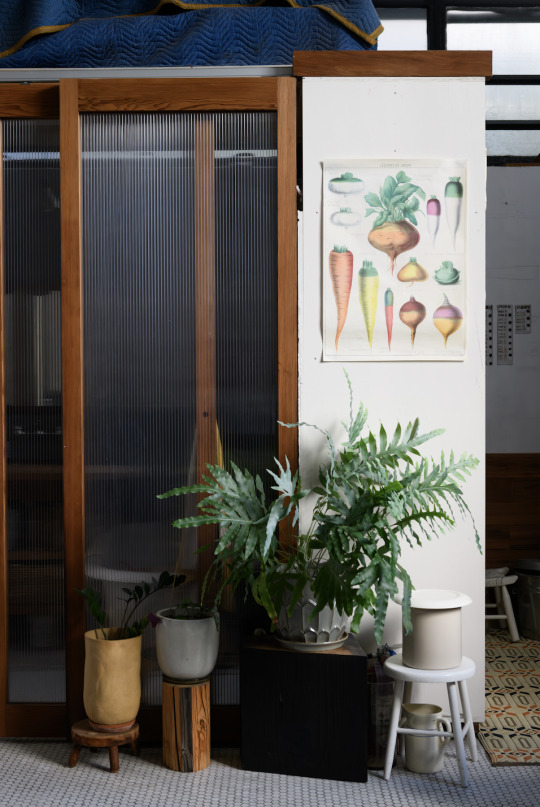



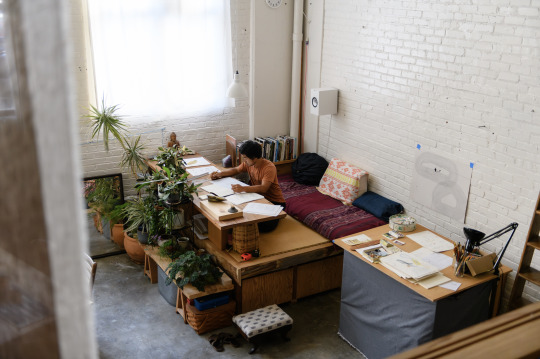




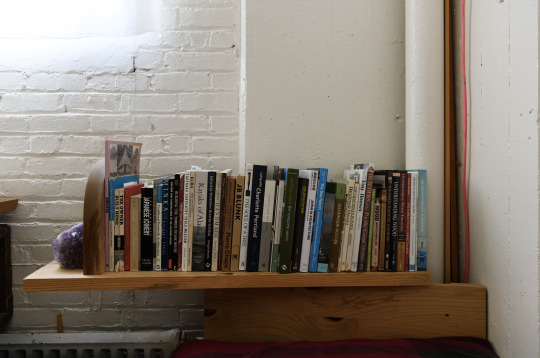
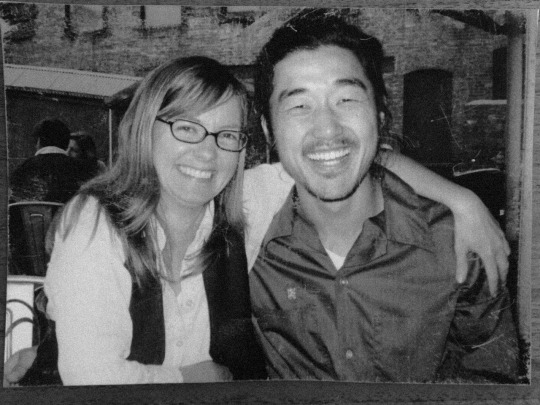
#studioahead#northern california#bayarea#studio ahead#artistspotlight#san francisco#california#interiordesign#art#nobuto suga#nobutosuga
0 notes
Photo

Since the new trailer for Ghosted is out - and it looks like a lot of fun - I thought I’d reshare my freehand colored pencil drawing of Ana de Armas from a couple years ago. ☺️ #anadearmas #notimetodie #blonde #bondgirl #knivesout #ghosted #glamour #model #draw #drawing #freehand #art #prismacolor #instaart #artcollective #coloredpencil #artistsoninstagram #beach #pencil #artistspotlight #portrait #gallery #pencildrawing #sketch #marilynmonroe #realism #fanart #photorealistic #photorealism #jjdart https://www.instagram.com/p/CpgH3lxvmzu/?igshid=NGJjMDIxMWI=
#anadearmas#notimetodie#blonde#bondgirl#knivesout#ghosted#glamour#model#draw#drawing#freehand#art#prismacolor#instaart#artcollective#coloredpencil#artistsoninstagram#beach#pencil#artistspotlight#portrait#gallery#pencildrawing#sketch#marilynmonroe#realism#fanart#photorealistic#photorealism#jjdart
4 notes
·
View notes